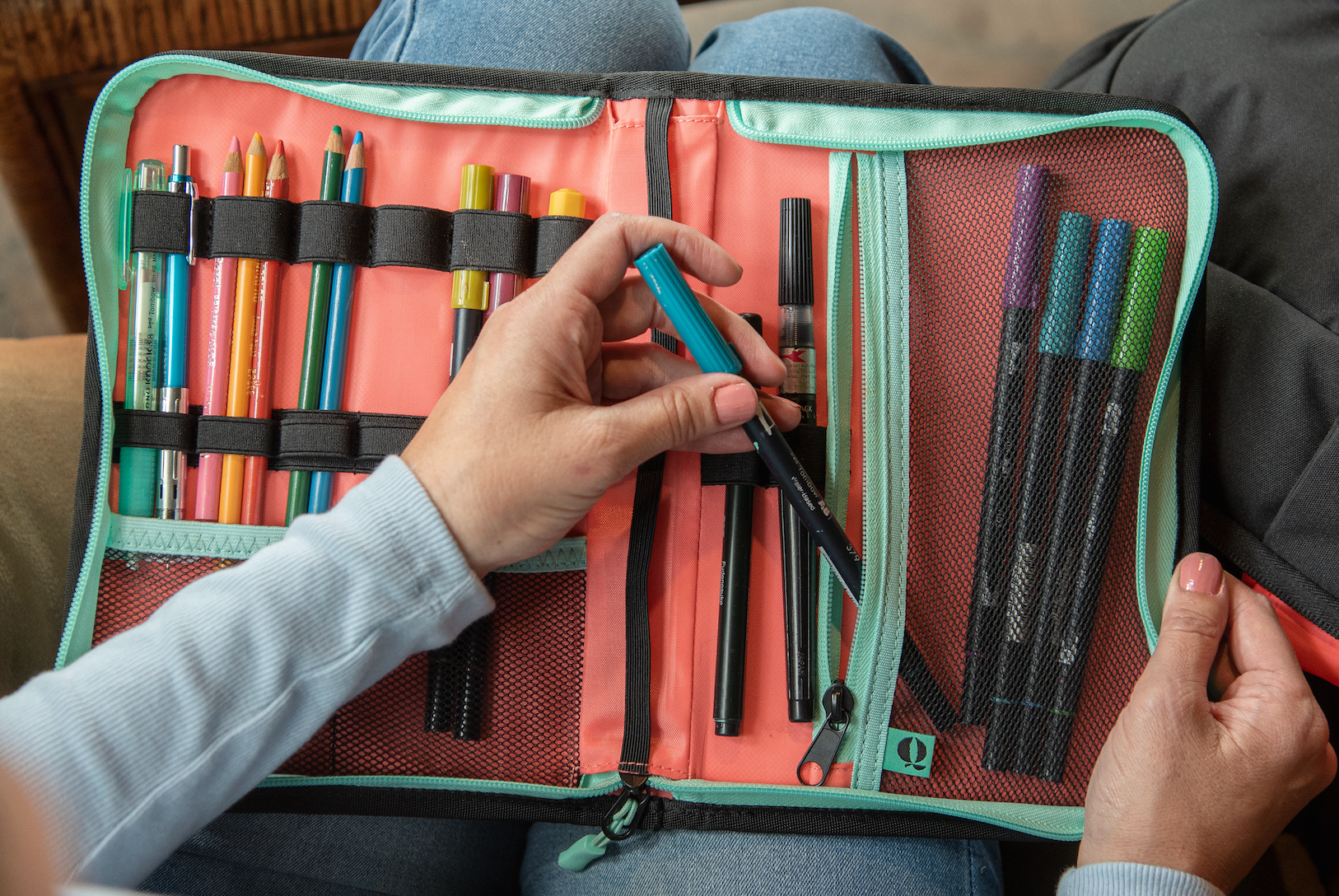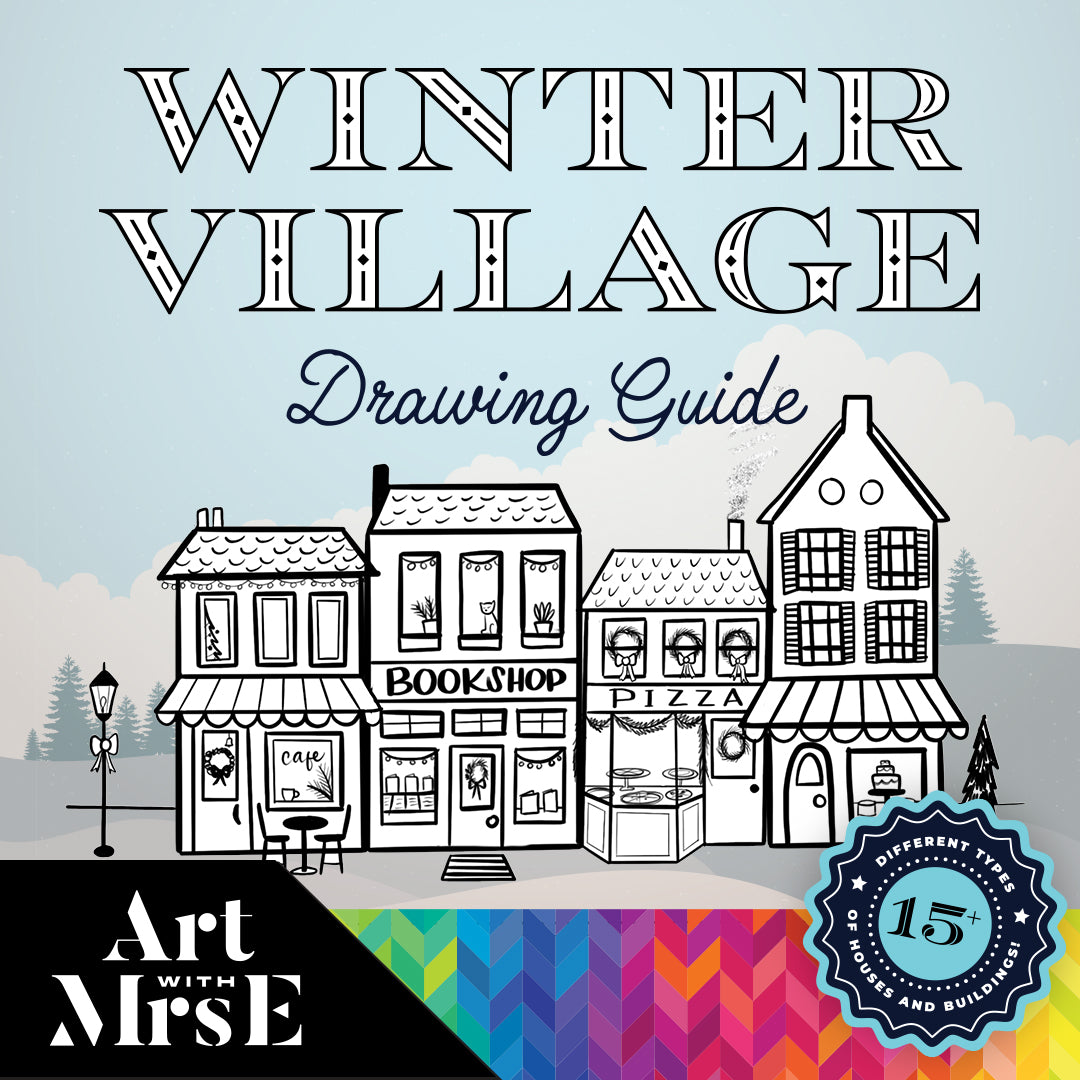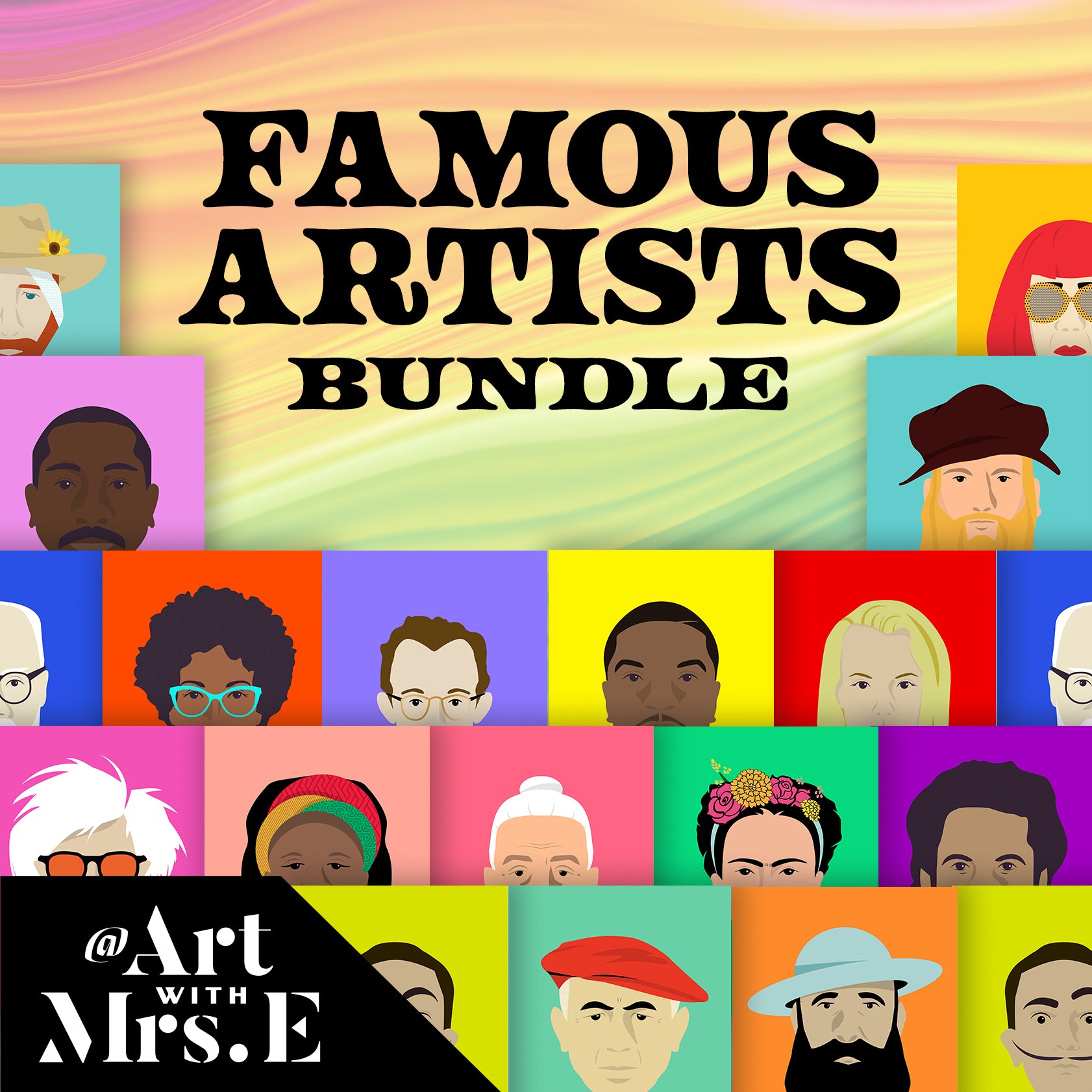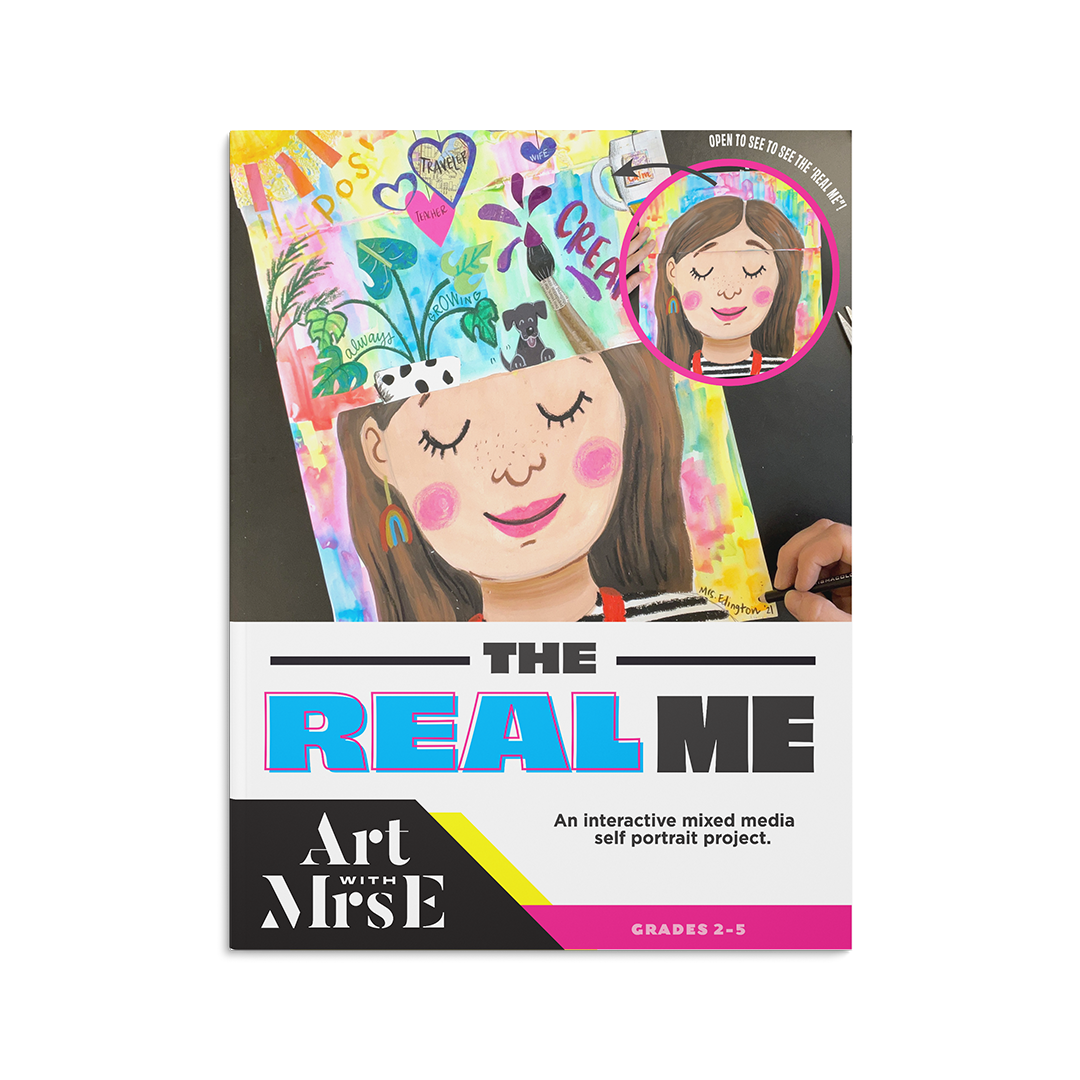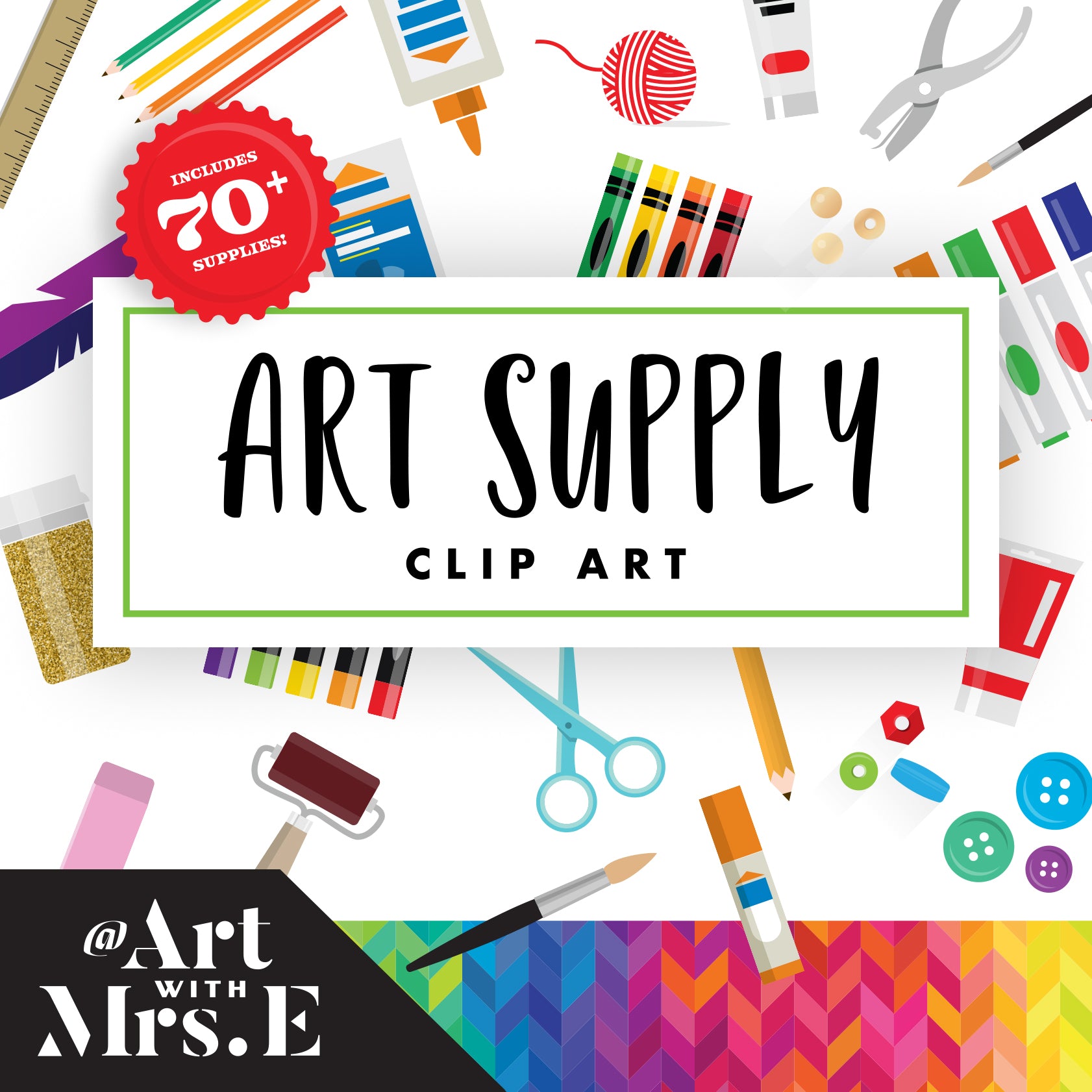
When you’re juggling work, family, and life’s endless to-do list, making time for creativity can feel impossible. Add kids into the mix, and art-making often falls to the very bottom—if it even makes the list at all.
But what if creating didn’t have to be a big, time-consuming production? What if it became as natural as grabbing your morning coffee?
The secret isn’t waiting for the perfect moment or a surge of motivation. The key is to start small, create an open invitation for yourself, and make art a natural part of your daily routine. As James Clear puts it in Atomic Habits, “Motivation often comes after starting, not before. Action precedes inspiration.”

1. Build the Habit First—Inspiration Will Follow
A common misconception about making art is that you need to feel inspired first. In reality, just getting started—even with a quick doodle, a color swatch, or a few lines—can spark ideas.
Instead of pressuring yourself to create something amazing, treat your sketchbook like a playground. Doodle while waiting in the car line, play with color while dinner is in the oven, or jot down small things that inspire you throughout the day. One of my favorite ways to just get started is painting a page in my sketchbook with a bunch of circles. Then later when the paint is try, I will ask myself "hmm now what can I turn these into?" I do this with other shapes too, like mugs, pots, or just blobs. It's enough to just rip off the bandaid of tackling the white page, and then excites me to get back to this page later on. You can also keep some drawing prompts on hand to easily access when you just can't think of what to draw! Remember, small creative moments add up over time!
2. Keep a Sketchbook Handy

You don’t need an elaborate setup or expensive materials to make art daily. Keeping an A5 sketchbook on hand has been a game-changer for me. The smaller size gives me a sense of accomplishment, even when I only have a few minutes.
And here’s the key: not every page needs to be a masterpiece. Your sketchbook is a space to experiment, play, and process your thoughts—free from pressure or judgment. The lower the stakes, the more likely you’ll keep coming back to it.
3. Make Your Supplies Easily Accessible

Forget the idea that making art requires a full palette of paint and a giant canvas. Most of us don’t have the time or space for a dedicated art studio—but what if your supplies were always within reach?
Lean into materials that excite you and fit your lifestyle. I love painting, but acrylics aren’t practical on the go—so I started carrying a travel-sized watercolor palette instead. To make creating easier, I put together a small pencil case with my favorite supplies, ready to go at a moment’s notice.
This habit is actually what led me to design the Quell Carrier Case—a portable sketchbook case that keeps my supplies organized and accessible without the hassle of a big setup or cleanup.
You can also create an invitation for yourself by leaving your supplies in a visible, easy-to-reach place. I like to keep my Quell Case on the kitchen counter, open and ready for when I wake up. If that doesn’t work for you, stash it in your bag, by your bedside, or anywhere you’ll naturally reach for it when you have a spare moment. If you're curious about what supplies I keep in my Quell case, or just my favorite supplies to use an artist, just click the links :)
4. Make Art Part of Your Daily Routine

Think about your current daily habits—could you pair art with one of them? Maybe you sketch while drinking your morning coffee, unwind with a few lines before bed, or doodle while your kids do their homework.
Habit stacking—adding a new habit to an existing one—makes it easier to be consistent. I’ve found that early mornings, before my kids wake up, work best for me most of the time. But here’s the bonus—on the days they wake up early, they often want to join in, and there’s no better way for us to start the day together!
5. Process Over Perfection

As a busy mom and teacher, I used to tell myself I “didn’t have enough time” to make art. But once I started making time, I realized how many micro-moments existed throughout my day.
Let go of the idea that every piece has to be polished or perfect. Maybe you only have 15 minutes while waiting at the doctor’s office—but that’s still better than not creating that day. The joy of art is in the process, not just the final product.
6. Use Sketchbooking as Self-Care

Did you know that making art can actually lower stress? A 2016 study from Drexel University found that just 45 minutes of art-making significantly reduced cortisol levels, even in people with little artistic experience. Similarly, a study published in The Journal of Positive Psychology found that engaging in small creative activities daily—like sketching or crafting—led to an increase in positive emotions, personal growth, and a sense of accomplishment.
Instead of scrolling your phone before bed, what if you took five minutes to sketch? Instead of filling every spare moment with productivity, what if you gave yourself permission to play with color? Reframing art as self-care rather than a luxury makes it much easier to prioritize.
7. Set a Small, Achievable Goal

If making art feels overwhelming, start with a small, manageable goal. Maybe it’s filling one page a week, doing a five-minute sketch each day, or exploring a single color palette over the course of a month. Even the smallest goal can help build momentum.
When I first started my sketchbook practice, my only goal was to create something—anything—every day. I didn’t set a time requirement or pressure myself with expectations. I just had to put something on the page. This simple approach made me more intentional about finding small pockets of time to create, and eight years later, it’s safe to say it worked!
8. Creativity Thrives with Limitations

Sometimes, too many choices can lead to creative paralysis. Setting limitations—whether it’s time, materials, or color choices—can actually help you break through perfectionism and get into the flow of making.
Try setting a timer for five or ten minutes and challenge yourself to create something within that window. When the clock is ticking, you’ll be less focused on making something “perfect” and more focused on simply starting. Similarly, limiting your supplies—like keeping only a few favorite tools or a small selection of colors in your kit—can remove decision fatigue and make it easier to dive into the process. Constraints can be incredibly freeing, allowing you to focus on the joy of creating rather than getting stuck in your head.
Final Thoughts: Just Start—What’s the Worst That Could Happen?

If you’ve been waiting for the perfect time to make art, this is your sign—start today. Open your sketchbook, grab your favorite supply, and just put something on the page. The more you do it, the easier it becomes. And with tools like the Quell Case, making art anytime, anywhere is easier than ever.
Oh- one last thing! If you're looking for a creative community to help inspire and push you to create more art, consider checking out my Patreon! I absolutely love sharing my personal practice with my patrons and have so much fun creating together in live zooms 2x a month in my Sketchbook Buddies tier. The only thing better than making art is making art with other like minded creatives :)
So, how will you make time for art today? Drop a comment and let’s inspire each other!





